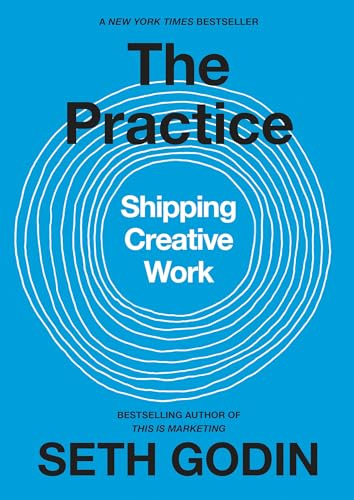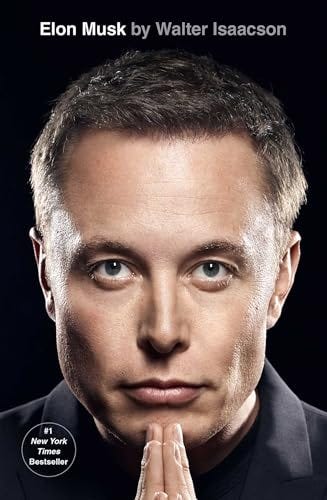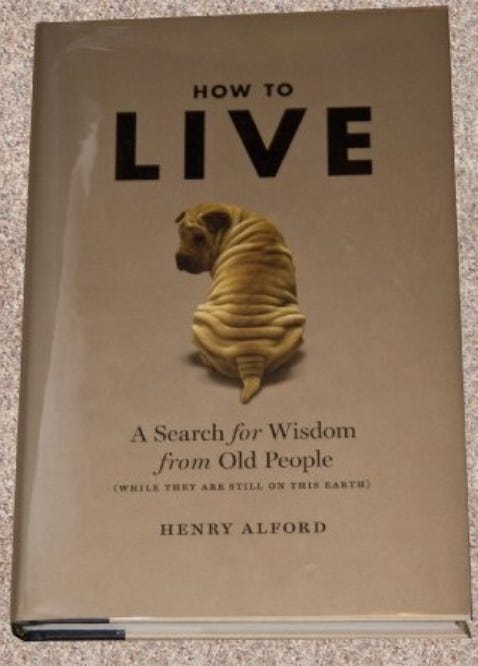Bicep Curls and Rockets: Reflections on Growth from the Gym to Elon Musk
Three books can change your Thursday. One book can change your world.
Hello,
As you may recall from my earlier post about managing my cholesterol, I’ve been trying to lower my LDL without medication. That mission brought me back to the gym with more consistency - nothing extreme, just showing up, putting in the work.
I’ve spent a lot of years in gyms. Dynamic Fitness at 17, where a few high school buddies (shout out to Seth Churi) and I would lift for two hours in the evenings. The SERF at the University of Wisconsin–Madison, where I also happened to meet the woman who one day I would marry—she was the ID checker. During med school, it was the JCC and Rutgers Rec Center. During residency, it was NYU’s gym. And after that, any house I moved into, I made sure to build a gym in the basement. For a few years in Michigan, I worked out in Andrew Rees’s garage (Urban Gym) - hands down the best workouts I’ve ever had.
But wherever I’ve trained, one thing has been constant: the mirror.
Every gym has a wall of them. And almost every workout, my routine eventually lands me in front of that mirror, usually seated on a bench, doing bicep curls.
After the first set, I drop the dumbbells, lean forward, hands on my knees, headphones in. And I look up.
And there I am–staring back.
It’s that moment between sets I’ve grown to love the most.
I don’t use it to flex (at least not anymore). I use it to reflect.
Not on how I look, but on what I’m doing—with my time, my health, my life. I think about what’s possible. About who I’m becoming. About the gap between where I am and where I want to be.
In those two minutes, I’m thinking about potential.
And lately, I’ve started noticing everyone else around me in those moments. The guy doing a shoulder press. The woman at the squat rack. The college kid doing dead lifts. All of them–just for a moment–staring at themselves in the mirror, too.
And I wonder: What are they seeing?
What story are they telling themselves between sets?
Maybe they’re admiring progress. Or regretting time lost. Maybe they’re chasing something–confidence, health, redemption. Maybe they’re just proud to be there, doing the work, not quitting.
And maybe, like me, they’re looking into their future. Measuring not who they are–but who they still want to be.
See, most of our day is spent looking outward–at other people, at screens, at problems we’re trying to solve. But in the gym, that mirror pulls you inward.
It’s the rare moment when you get to see your effort–not just your appearance. And when you catch that glimpse, it can light a spark.
It reminds you that you’re still in the fight. That change is possible. That progress, even slow and silent, is still progress.
So now, when I see others staring at themselves between sets, I smile–not out of judgment, but out of solidarity.
Because I know that moment.
I know how sacred it can be.
And I hope–whoever they are, whatever they’re working through–they find something in that reflection worth believing in.
Welcome to this week’s Three Book Thursday.
1. Entrepreneurship
The Practice
Summary
There’s a quiet but powerful truth at the heart of this book: you don’t become creative, prolific, or successful by accident. You earn it through the practice. Not a practice. The practice.
In The Practice, Seth Godin strips away the mythology of creativity—that it’s reserved for the lucky, the inspired, the chosen. He reminds us that meaningful work—whether it’s writing, building a business, delivering care, raising a family, or leading a team—doesn’t come from waiting for a lightning bolt. It comes from showing up. Every day. Especially when no one is watching.
I’ve long considered Seth Godin my adulthood mentor. We’ve never met, but I’ve read all of his books, and his ideas have shaped how I think about work, purpose, and contribution. His writing is the filter I often run my own ideas through—a reminder to lead with generosity, consistency, and courage.
The book reads like a series of sharp, purposeful reflections. Each one a small nudge forward. He challenges the idea that we need confidence to begin. In fact, it’s the opposite. We build confidence by doing. Over time. Through repetition. Through generosity. Through making things better by making things first.
For anyone who’s felt stuck—staring at the blank screen, the unlaunched idea, the quiet season of uncertainty—this book is fuel. Godin gives you permission to stop stalling and start sharing. To stop obsessing over perfect and start trusting the process.
It’s not about chasing outcomes. It’s about becoming someone who ships. Someone who leads. Someone who makes things better.
You don’t need guarantees. You need a process.
You don’t need validation. You need to keep showing up.
That’s the practice.
And if you commit to it, over time, it changes everything.
Quote: “The only way to be on the journey is to be on the journey.”
Principle: Your work is too important to be left to how you feel today.
Insight: Creativity is an action, not a feeling.
Author: Seth Godin
Themes: Entrepreneurship, Personal development, Culture, Starting a business, Running a business
My personal notes from the book
2. Biography
Elon Musk
Summary
Love him or hate him, Elon Musk has changed the world.
You don’t have to agree with his methods, admire his personality, or even like the guy. But if you care about innovation, leadership, or building something that leaves a mark–then understanding Musk matters. Because what Isaacson gives us in this biography isn’t just a portrait of a person. It’s a deep dive into what happens when someone refuses to accept limits.
This book doesn’t read like a highlight reel. It’s raw. At times uncomfortable. It doesn’t hide Musk’s flaws–his intensity, his erratic decisions, his often brutal leadership style. But that’s part of what makes it so powerful. Isaacson shows us what it really looks like to build rockets while bankrupt, to sleep on factory floors, to push through setbacks with a level of obsession most people can’t understand—–et alone tolerate.
And that’s the central tension of the book: Musk isn’t balanced. He’s not the guy you go to for advice on work-life harmony. But he is a reminder of what’s possible when you’re willing to bet everything on your vision.
For anyone trying to move the needle in their world–Elon Musk is both cautionary tale and masterclass. It forces you to ask hard questions: What are you willing to sacrifice? How do you balance conviction with empathy? When do you follow reason–and when do you break the rules?
But in a world that often values comfort over courage, Musk’s story is a jolt–a reminder that progress doesn’t come from playing it safe.
It comes from those willing to build, fail, rebuild, and keep going.
Quote: “The people who are crazy enough to think they can change the world are the ones who do.” -Steve Jobs
Principle: It’s not how well you avoid problems. It’s how fast you figure out what the problem is and fix it.
Insight: I was concerned that if I didn’t study business, I would be forced to work for someone who did.
Author: Walter Isaacson
Themes: Biography, Running a business, Product development
My personal notes from the book
3. Living a full life
How to Live: A Search for Wisdom from Old People (While They Are Still on This Earth)
Summary
This book is built around one question: What have you learned about how to live? Henry Alford sets out to ask that question to people in their 70s, 80s, and 90s—some famous, some not—but all of them carrying stories and truths we rarely slow down to hear.
What he finds isn’t advice in bullet points. It’s something quieter. More human. People who’ve lived long lives talk less about achievement and more about joy. Less about winning, more about connection. Regrets are usually about what wasn’t tried, not what was. Gratitude shows up everywhere. So does humor.
As someone who’s always looking forward—building, doing, planning—this book reminded me of the value of looking backward, through the eyes of those who’ve already lived the miles we’re still walking.
For the ambitious, the busy, the driven—this is a pause worth taking. A chance to gather wisdom while it’s still here to be shared.
It’s not a guide to success. It’s a nudge toward meaning.
Because the best way to learn how to live… is to ask someone who already has.
Quote: “It’s not about adding more years to your life, it’s about adding more life to your years.”
Principle: A good life is made up of a thousand small decisions that no one applauds.
Insight: Never underestimate the value of staying curious.
Author: Henry Alford
Themes: Living a full life, Personal development
My personal notes from the book
Each of these books circles the same quiet truth: the space between effort is where the real work begins.
It’s in that pause—between sets, between decisions, between chapters—where we start to see who we’re becoming. Not through intensity, but through intention. Through reflection, not reaction.
Whether it’s building something big, staying consistent with what matters, or learning how to live before it’s too late—it’s the space between that reveals the direction we’re headed. And sometimes, that’s all we need to keep going.
Always ❤️📚💡
Three Book Thursday is free, but there are many costs to create these posts each week. So, can you do me a favor?
If you find value here, please support the newsletter.
Please share Three Book Thursday with a friend, college, family member, or post it to your socials. I’m working hard to grow this audience, but let’s be honest—you’re probably better at it than I am.
Or, do both!






